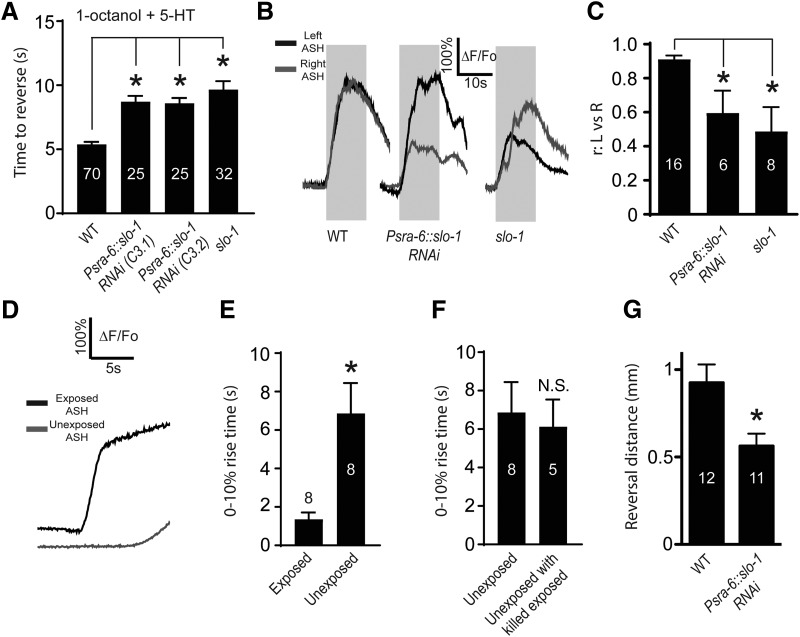Figure 6.
SLO-1 acts downstream of Ca2+ in ASHs to regulate 5-HT modulation, ASH-dependent aversive behavior, and ASH response dynamics. A, Reversal times in the 1-octanol avoidance assay, in the presence of 5-HT, for wild-type worms, ASH-specific SLO-1 RNAi knockdown worms (two independent lines, C3.1 and C3.2), and slo-1 mutants. *Significantly different from control (F(3,136) = 6.836, p < 0.001, ANOVA). B, Simultaneous Ca2+ responses of ASHL and ASHR from individual worms (representative traces). Gray boxes represent 1-octanol application, genotypes, and/or pharmacological treatments indicated below trace. C, Pearson's correlation coefficients (r) values for ASHL and ASHR signals. *Significantly different from control (F(2,27) = 16.87, p = 0.0017, ANOVA). Representative traces (D) and 0%–10% rise times (E) from simultaneous recordings of exposed and unexposed ASH neurons exposed to high K+ buffer (see also Materials and Methods; Movie 1). *Significantly different from control (exposed vs unexposed p = 0.0123, t = 3.35, df = 7, paired t test). F, Comparison of 0%–10% rise times from unexposed ASHs in specimens where the exposed ASH was killed. N.S., Not significantly different to control (unexposed rise times reproduced from Fig. 6E) (p = 0.7538, t = 0.3216, df = 11, unpaired t test). G, Distance traveled before Ω turn during 1-octanol avoidance, comparing wild-type and ASH-specific SLO-1 RNAi knockdown. *Significantly different from control (Psra-6::slo-1 RNAi vs WT, p = 0.0107, t = 2.8, df = 21). Numbers in bars indicate n. Data are mean ± SEM.

